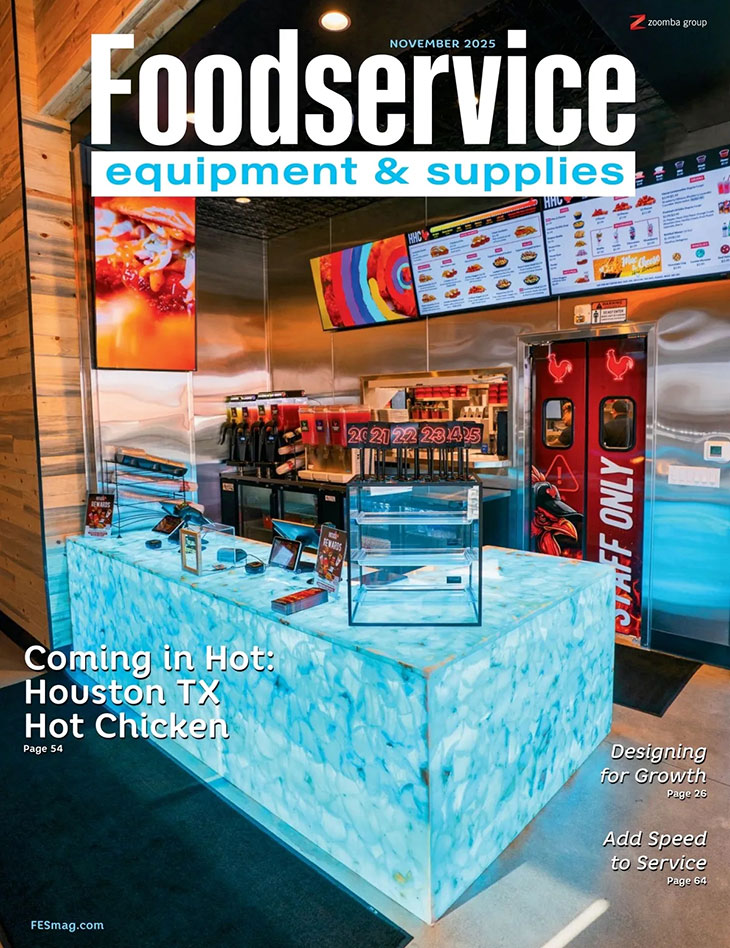When Khyla Dixon, regional marketing manager for K-12 by Elior, was tasked with improving breakfast participation at the 1,800-student Oak Lawn Community High School in Chicago’s south suburbs, the challenge was clear: Meet the students where they’re at.
 Khyla Dixon, regional marketing manager for K-12 by EliorStudents simply weren’t engaging with the school’s breakfast program; they were eating something small at home, stopping at the local convenience store or doing what educators don’t want to have happen and skipping breakfast all together. As part of a broader effort to reimagine the high school dining experience, Dixon and her team spearheaded a program that included a mobile Breakfast on the Go cart, offering a variety of hot and cold options in a more accessible and appealing way. The result? A remarkable 61% increase in breakfast participation during the first week of the school year.
Khyla Dixon, regional marketing manager for K-12 by EliorStudents simply weren’t engaging with the school’s breakfast program; they were eating something small at home, stopping at the local convenience store or doing what educators don’t want to have happen and skipping breakfast all together. As part of a broader effort to reimagine the high school dining experience, Dixon and her team spearheaded a program that included a mobile Breakfast on the Go cart, offering a variety of hot and cold options in a more accessible and appealing way. The result? A remarkable 61% increase in breakfast participation during the first week of the school year.
Here, Dixon dishes about the inspiration behind this initiative, how the mobile cart works, and the other exciting changes that are transforming school dining at Oak Lawn.
Q: What was the goal behind the high school breakfast initiative?
A: The overall plan for the new branding of the OLCHS foodservice program was to bring an elevated feel to the dining area and services to our students and also just get them prepared for the next level, while doing that, providing them with an aesthetically pleasing environment but also elevating our food services at the same time.
Q: Why focus on breakfast specifically?
A: Breakfast was just one of the opportunities that we were able to take because breakfast participation was extremely low compared to our lunch participation. Typically, middle and high school students' breakfast participation is always low. So, we just wanted to make it a little bit more enjoyable and give them options to expand their food palate and enhance the school breakfast experience. The thought process is, with the influx of technology now, students are stopping to get breakfast before they get to the school. They’re even using DoorDash to get breakfast dropped off at the school. Our ideology was to kind of minimize that by giving them a retail feel as soon as they walked through the door. So they’re not thinking to stop at the QT or the Wawa before school, but instead stopping at the breakfast cart once they enter.
Q: How does the breakfast cart work?
A: The breakfast cart is a cart that we’re able to utilize during breakfast hours that can move around the school and provide students with hot and cold breakfast items. So if the students are more likely to grab their breakfast and go straight to the classroom, they have easy accessibility to the breakfast cart while it is moving around the school grounds.

Q: What items are offered on the breakfast cart?
A: We offer hot and cold items, so we’re able to offer different things like breakfast muffins, fruit, vegetables. We also offer a lot of breakfast bars, grain bars, and we do provide students with hot options like French toast sticks, pancakes, and our muffins are always served warm.
Q: How are hot and cold items kept at the right temperature?
A: We use a hot-holding system with a mobile heater placed on top of the cart, almost like a heat lamp for the prepackaged items in insulated carriers. For cold items, we use insulated black pans where we put an ice pack at the bottom and then put their cold items on top.
Q: How do you measure the success of the program?
A: Typically, we measure the success by our POS system. We’re able to track how many students are grabbing breakfast at the time, and that is in the hands of the foodservice worker who’s managing the cart that day. This year, we were able to track breakfast for the first week of school, which was enhanced by 61% from last year.
Q: Have other changes been made to food services at the school?
A: We’ve made quite a few changes for our lunch service. We were able to add two open-air coolers, which we use to store deli wraps, parfaits, Bento boxes, deluxe meals, chef salads, fruit, and milk and any a la carte menu items that we have for the week. It kind of gives [the students] a retail feel during lunch. Additionally, the salad bar has seen upgrades. We were just able to upgrade some of the equipment in the salad bar to make it feel a little bit more like a restaurant with more customizable options. Our salad bar houses veggies, a variety of different dressings, and typical toppings like cucumbers, tomatoes, lettuce, cheese, carrots, pickles, black olives and others.
Q: What’s next for the program?
A: We recently added some matte black [POS stands] sourced by our equipment partner. We’re hoping to add new technology and equipment to our kitchens for the next few years to continue to expand the breakfast and lunch dayparts. We are also actively updating our student survey platforms as well to enhance our lunch services to continue to improve our services to our students by collecting feedback from each location who services 6th through 12th grade.



